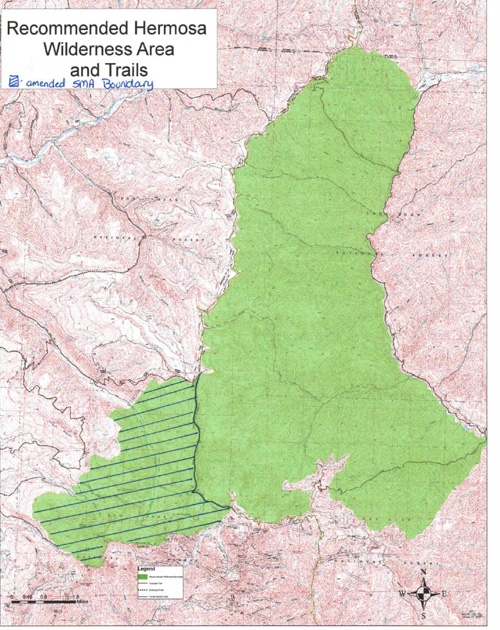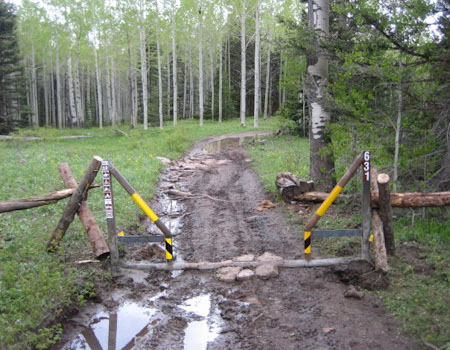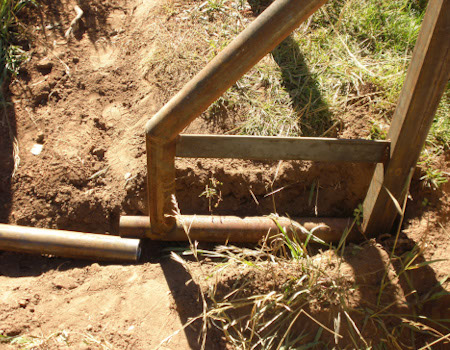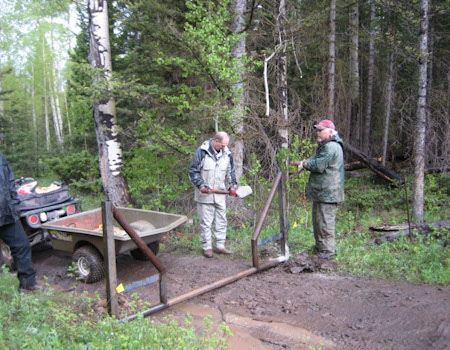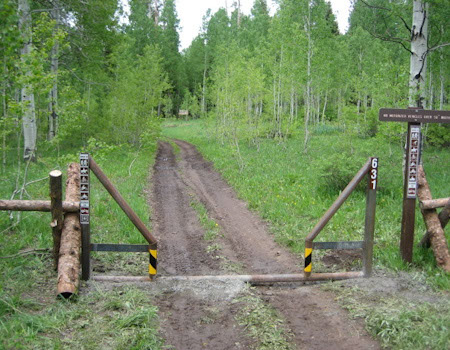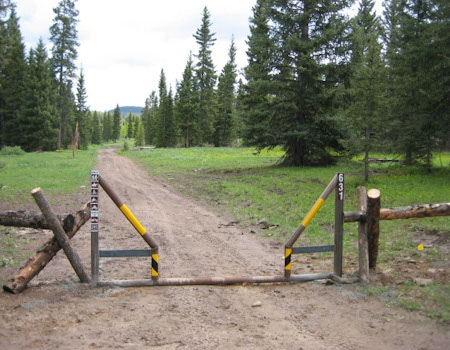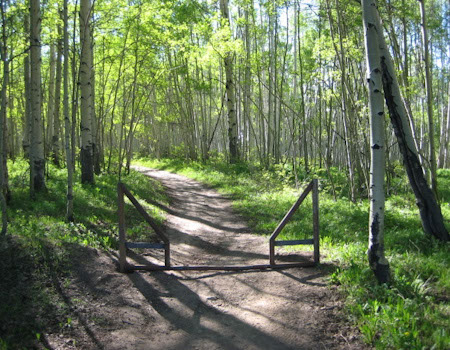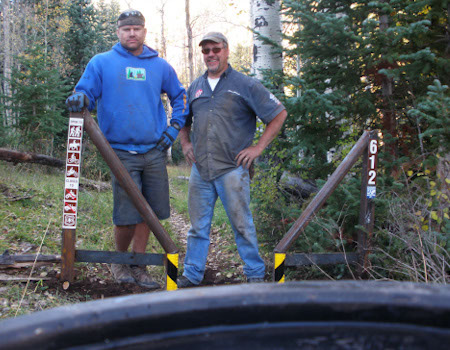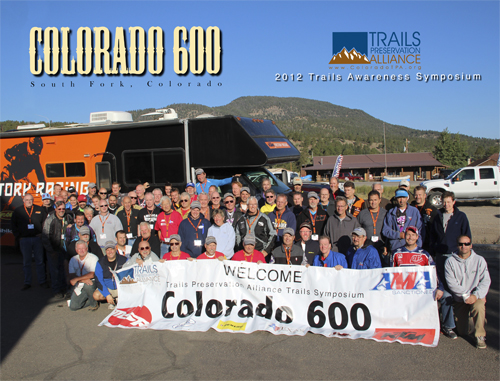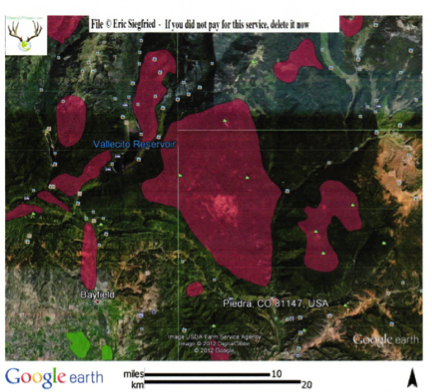Archive | News
Tenderfoot Trail Project
TPA and COHVCO letter of support to the SCORR Tenderfoot project
| |
September 29, 2012 |
|
|
TPA and COHVCO letter of support to the SCORR Tenderfoot project
Dear Representative Polis: We are writing today to express our strong support for the U.S. Forest Service’s recent draft proposal to build a small system of sustainable, multi-purpose trails in the Tenderfoot area of Summit County on the White River National Forest. Once constructed, these trails would continue to provide recreation opportunities for single track motorcycle use along with all other trail uses except ATV’s and full size four-wheel drive vehicles. Before getting into the specifics, we want to thank you for the work you do on behalf of Colorado tourism and small business. In many of our rural communities, small businesses play a key role in the local economy by providing motorized outdoor recreation opportunities such as 4-wheeling, ATV rides, snowmobile rides, and in our case, trails for motorcycle riding. These recreation activities generate essential income and jobs in many of our smaller rural towns such as Ouray, Telluride, Durango, Silverton, Grand Lake, and in areas such as Vail Pass. Unfortunately, over the past decade, a number of environmental groups have made a concerted effort to exclude motorized users from enjoying our National Forests. Through political pressure and lawsuits, the actions of environmental groups have significantly reduced motorized recreation opportunities. In our opinion, groups such as the Center for Biological Diversity, the Quiet Use Coalition, Rocky Mountain Wild, the Colorado Environmental Coalition, and others have exhibited an attitude of increasing intolerance towards motorized recreation on our public lands. In spite of our best efforts, it is becoming increasingly difficult to work with these groups in an atmosphere of collaboration. When it comes to the management of public lands, we want to emphasize that decisions are not made according to “majority rules.” If this were so, the record shows that our well-funded and large-membership environmental organizations would force our national forests to discontinue grazing and commercial timber harvest that support local ranchers and logging companies. As a result of continuing and long-standing litigation in opposition to timber sales, there is only one large saw mill remaining in Colorado and with the huge amount of beetle- killed timber there is simply no market, such as companies that manufacture biofuel products, for this wood. If the environmental majority ruled, oil and gas exploration and development and many other uses would stop. These activities would be pushed, and in fact already have been, to countries where environmental protections are relatively nonexistent. As a result, our global rain forests are being decimated to meet the demands coming from the United States for energy and forest-based products. Shame on them! When it comes to outdoor recreation, the number of motorized users in Colorado continues to grow. We do not realistically expect our national forests to meet the entire demand for the growing number of enthusiasts. However, we also do not think that closing more and more trails to motorized recreationists is a viable solution. If closures and opposition to responsible motorized recreation continues, users will be forced to find places where their activity is unlawful in hopes that law enforcement will not “catch” them. From our viewpoint, it seems that almost every other recreation user group, including ski areas and mountain bikers are receiving preferential treatment in terms of meeting increasing user demands. This is simply not equitable. The Tenderfoot Trail System The proposed Tenderfoot Trail system in Summit County is a modest trail proposal that the motorcycle community and the Summit Count Off-Road Riders (SCORR) in particular, have worked hard to bring to fruition. Two years ago, a Colorado state OHV grant was used to conduct the associated NEPA analysis and trail layout. As you are probably aware, the OHV fund in Colorado is funded by the state OHV registration program, a fee placed on OHV owners that is supported by the OHV community specifically for OHV trail construction and maintenance. Working in collaboration with the Forest Service, SCORR and the Forest Service have completed all of the technical analyses including sound tests, meetings with local municipalities and the county commissioners, and public hearings. Additional highlights and of this trail system are as follows:
|
||
|
|
||
|
|
||
TPA, COHVCO and CSA comments on the Hermosa Watershed Proposal
TPA trail crew installing trail barriers to protect single and two track trails
|
September 19, 2012 |
||
| Thanks to the TPA Barrier trail crew for their work in preserving single track and dual sport/atv trails!
This project has been funded by the Colorado OHV trail grant fund.
|
||
|
|
||
|
|
||
Photos from Trail Awareness Symposium posted by the AMA
|
September 15, 2012 |
||
|
The AMA has posted a gallery of over 300 photos from the 2012 Trails Awareness Symposium!
Click here to see the AMA photos!
|
||
|
|
||
|
|
||
TPA and COHVO Comment on Norwood Burn Canyon Rec Trails Project
Thank you Trail Awareness Symposium 2012 Riders!
|
September 6, 2012 |
||
|
Colorado 600
Trail Awareness Symposium 2012 August 26th – August 30th To all of this years riders, It is up to this generation to save our sport for the future and you have played a vital part in doing that. Your support and donations to the TPA are greatly appreciated. Please contact us for any suggestions on how to improve next year’s ride. Hope to see you all next year. Thank you, &
Stan Simpson The Sidewinders Motorcycle Club PS. It was brought to our attention, there is a hole in the backpacks for a hydration pack hose. So the packs can come in handy for the trail as well.
|
||
|
|
||
|
|
||
Legal counsel retained to deal with Bear Creek Trail lawsuit
|
August 20, 2012 |
||
|
The Trails Preservation Alliance (http://www.coloradotpa.org) and Colorado Off-Highway Vehicle Coalition (www.cohvo.org) have retained legal counsel to develop contingency plans for dealing with the lawsuit threatened by the Center for Biological Diversity (CBD) concerning the Bear Creek trail (#667, Pike Peak National Forest) located near Colorado Springs. This trail has a historic 50 year lineage as a multiple use trail and is the primary access to the Captain Jack’s trail system. The CBD has threatened to file a law suit against the City of Colorado Springs and the USFS to close the trail to motorized recreation, not mountain biking or hiking. This threatened lawsuit alleges that motorcycle caused trail erosion is damaging the habit of a native trout species.
The City of Colorado Springs and the USFS are considering options for this threatened lawsuit. The Center for Biological Diversity has a history of threatening and or engaging in such legal actions across the USA. If they win this they will just ride their wave of success to their next motorcycle trail of choice. We must stop them in their tracks and that costs money. Donations can be made directly to either web site. —————– COHVCO is a nonprofit organization whose member enthusiasts, organizations and businesses collectively comprise over 200,000 Coloradoans and regular visitors to Colorado and other western states who contribute millions of dollars and thousands of hours annually to off-highway vehicle recreation through registration fees, retail expenditure, project participation and related support. Learn more on the web: www.cohvco.org
|
||
|
|
||
|
|
||
Federal court refused to grant a motion to close trails near the Rico-West Dolores
|
May 25, 2012 |
||
|
Recreation advocates today welcomed news that a federal court in Colorado refused to grant a motion to immediately close 14 popular trails near the Rico-West Dolores area in southwest Colorado.
Backcountry Hunters and Anglers, Colorado Chapter, have filed a lawsuit challenging motorized access in the Rico West Dolores area of the San Juan National Forest. Earlier this spring they moved for a preliminary injunction seeking a court order closing 14 trails to motorized use. According to their papers, the injunction was needed in early June to prevent irreparable harm that would be caused by resumption of historical use of the trails after snowmelt. Plaintiffs therefore requested a hearing on their motion before early June. The preliminary injunction and voluminous associated filings were vigorously opposed by the Forest Service and intervenors Colorado Off Highway Vehicle Coalition (COHVCO) – Trail Preservation Alliance (TPA) – San Juan Trail Riders (SJTR) – Public Access Preservation Association (PAPA) -BlueRibbon Coalition (BRC). On May 24, 2012 the Court held a hearing to consider “the request for a preliminary injunction hearing.” After considering statements from counsel for all parties, the Court minutes state “(n)o hearing will be set at this time.” The Court set a schedule for presentation of the merits of the case, under which the final brief will be filed on August 17, 2012. The minutes further state “if the Court deems oral argument necessary, it will set that hearing.” As a result, it is apparent that no injunction preventing continued motorized travel on the 14 trails will be entered at this time. Access on those trails and other portions of the Rico West Dolores area will continue to be managed by the Forest Service under existing regulations. Selected documents from the court file are located here http://www.sharetrails.org/legal/rico-dolores —————– PAPA is a regional recreation group that supports and champions access and responsible use of public lands, and encourages individual environmental stewardship. PAPA’s Mission is to promote balanced, unbiased, responsible use of public lands in collaboration with recreational users of all interests, advocating respect, education and conservation of the environment. Learn more on the web: www.papatelluride.org The mission of the SJTR is to improve opportunities for off-highway vehicles and assure the best care of the land. SJTR promotes active participation in OHV trail management and other civic activities and maintains a focused and ongoing dialogue with the San Juan National Forest and other public land planners. SJTR educates OHV users about “Tread Lightly” conservation practices and other trail use issues. Learn more on the web: http://sanjuantrailriders.org The Trails Preservation Alliance is a nonprofit organization dedicated to protecting the sport of motorized trail riding, educating all user groups and the public on the value of sharing public lands for multiuse recreation, while protecting public lands for future generations. Learn more on the web: www.coloradotpa.org COHVCO is a nonprofit organization whose member enthusiasts, organizations and businesses collectively comprise over 200,000 Coloradoans and regular visitors to Colorado and other western states who contribute millions of dollars and thousands of hours annually to off-highway vehicle recreation through registration fees, retail expenditure, project participation and related support. Learn more on the web: www.cohvco.org The BlueRibbon Coalition is a national recreation group that champions responsible recreation, and encourages individual environmental stewardship. With members in all 50 states, BRC is focused on building enthusiast involvement with organizational efforts through membership, outreach, education, and collaboration among recreationists. Learn more on the web: www.sharetrails.org |
||
|
|
||
|
|
||
Federal report states Wilderness areas help contribute to beetle epidemic
|
April 27, 2012 |
||
|
Action Alert:Support the American Motorcyclist Association (AMA) in its efforts to protect your freedom to ride!
A U.S. Forest Service (USFS) report identifies Wilderness areas and roadless areas as significant obstacles to controlling the bark beetle epidemic. The American Motorcyclist Association (AMA) would like you to be aware of a USFS report entitled Review of the Forest Service Response: The Bark Beetle Outbreak in Northern Colorado and Southern Wyoming issued by the Rocky Mountain Region and Rocky Mountain Research Station at the request of U.S. Sen. Mark Udall (D-Colo.). To view the report, click here. The report cited several factors that helped set the stage for a large-scale bark beetle outbreak. One factor cited was the use of Wilderness designations. Specifically: “Limited accessibility of terrain (only 25% of the outbreak area was accessible due to steep slopes, lack of existing roads, and land use designations such as Wilderness that precluded treatments needed to reduce susceptibility to insects and disease).” And the report further stated: “In general, mechanized treatments are prohibited in designated wilderness areas. The Arapaho, Roosevelt, White River, and Routt National Forests in Colorado have a combined total of over one million acres of wilderness; the Medicine Bow National Forest in Wyoming has more than 78 thousand acres. A large portion of these wilderness acres have been impacted by the current bark beetle outbreak.” Most troubling, the report states that the bark beetle outbreaks will lead to more intense fires for an “indeterminate amount of time following attack.” The AMA encourages all riders to utilize this report because it indicates that a Wilderness designation has a negative effect on the overall forest health. Vast areas of America’s public lands are already designated federal Wilderness, and the AMA urges careful scrutiny and consideration of all current and future Wilderness proposals. A special thanks goes to the Colorado Off-Highway Vehicle Coalition for bringing this report to the attention of the AMA. If you are not an AMA member and care about what is affecting riders today, please join the AMA to help protect the rights of motorcyclists. More members means more clout against interests looking to end motorcycling, and your support will help the AMA fight for your rights – on the road, trail, racetrack, and in the halls of government. To join, go to www.AmericanMotorcyclist.com/membership/join. |
||
|
|
||
|
|
||
Notice of Appeal, Turkey Springs Trail Management
Letter to Colorado Legislators in reply to Backcountry Hunters letter
Trail Creek Watershed
Update on Colorado Access Lawsuits
Letter to USDA in opposition of the report entitled “A Comprehensive Framework…”
Economic impact of expanding Wilderness designations
Executive summary of the Colorado OHV Law Enforcement Program
| |
February 24, 2012 |
|
|
Colorado’s Off-highway Vehicle (OHV) Trail Program
Colorado’s Off-Highway Vehicle Program is statutorily created in sections 33-14.5-101 to 33-14.5-113, Colorado Revised Statutes (CRS), and is funded through the sale of OHV registrations and trail use permits. It is estimated that over 160,000 vehicles will be registered or permitted in the 2012-2013 season generating revenues in excess of $4 million. The price of an annual OHV registration or OHV trail use permits issued for out-of-state or licensed vehicles is $25.25. Funds are used to support the statewide OHV Program, the OHV Registration Program and OHV Trail Grant Program, including OHV law enforcement. Registration and use permit revenues are deposited into the OHV Recreation Fund authorized by section 33-14.5-106, CRS. The 2011 OHV Law Enforcement Pilot Program The OHV Law Enforcement Pilot Program was initiated by the State Parks Division and the State Parks Board as part of a strategic initiative designed to address questions and concerns raised by critics of OHV recreation on public lands in Colorado. The matter of OHV riding on public lands in Colorado and OHV enthusiasts’ compliance with OHV riding regulations had been a frequent topic of concern brought before the State Parks Board in 2009 and 2010. The State Parks Board approved the OHV strategic process in May, 2010. The OHV draft Law Enforcement Pilot Program plan was subsequently developed in accordance with the approved strategic process and its startup endorsed by the Parks Board in March, 2011. The 2011 Off-highway Vehicle Law Enforcement Pilot Program featured four major elements: a seasonal law enforcement detail under the direction of the Colorado State Parks motorized trail unit; two law enforcement details under the direction of the Forest Service and the BLM, respectively; and a citizen based, peer-compliance initiative implemented by the Responsible Recreation Foundation. A steering group representing the Forest Service, BLM, the State Park Trails Program, the Responsible Recreation Foundation and the Colorado Recreational Trails Committee coordinated field operations and deployments of law enforcement teams for the duration of the pilot program. Deployments focused on high use OHV riding areas throughout Colorado and areas of concern identified by environmental interest groups. The principle focus of this effort was a comprehensive assessment of Colorado’s OHV compliance and law enforcement needs. The program gathered compliance information and data related to approved travel management plans, signage, OHV registration requirements and designated OHV trails. Specifically, the law enforcement teams were not required to address or fix infrastructure needs such as signage replacement or repairs, trail maintenance or repairs or performing trail closures. Pilot Program participants, particularly the State Park OHV Ranger Teams carefully documented matters like signage adequacy, route closure and trail maintenance needs and reported those findings to the appropriate land management agency. Funding for this effort was estimated to be $630,000 with the bulk of the work slated to be performed during the 2011 summer and fall recreation seasons. Funding for the project was drawn from the OHV Recreation Fund and was set aside in Fiscal Year 2011. The actual cost of the program was approximately $310,000. All of the data and information generated by the project’s participants has been incorporated into this summary report. The data and observations documented by the project demonstrate excellent compliance with OHV rules and regulations throughout Colorado by the OHV riders contacted in the field by the program’s participants. Over 10,000 individual OHV riders were stopped and inspected by the pilot program’s participants. A total of 290 warnings and 125 citations were issued to OHV riders who failed to comply with OHV registration requirements including failure to have or display a valid OHV registration or permit, expired OHV registrations, or failure to have proof of a valid OHV registration on hand. A total of 109 warnings and 35 citations were issued for non-registration related violations including minors (youth ten or older) riding OHVs not under the direct supervision by a person who possessed a valid driver’s license issued by the State of Colorado or another state, unsafe operation such as speeding, equipment or sound violations, operating an OHV on a public street or road not authorized for OHV access or other miscellaneous OHV operator violations. Five (5) warnings and seven (7) citations were issued to OHV operators who were found to be operating off of a designated OHV trail or roadway. No custodial arrests were made and little off-trail damage was noted by the State Park Rangers or the Law Enforcement Officers (LEOs) employed by the Forest Service or BLM under the OHV Law Enforcement Pilot Program. The percentage of the warnings and citations issued versus the total number of OHV riders stopped and checked by the pilot program officers are as follows: % of OHV riders contacted who received a warning or citation (571); 5.3 % % of OHV riders contacted receiving a warning or citation not related to registrations (156); 1.5 % % of OHV riders receiving a warning or a citation for operating off of designated routes (12); .12 % The Responsible Recreation Foundation (RRF) implemented the Colorado Trail Patrol Program as a peer-to-peer compliance monitoring effort under the pilot program. Over the course of the 2011 summer and fall recreation season, RRF trained 265 volunteer monitors and logged 940 hours monitoring roads and trails on public lands in Colorado. Most of the RRF trained monitors were full-sized vehicle operators and therefore spent most of their time on roads traveled by 4×4 vehicles. Many of the trained monitors did not log their observations. When RRF surveyed those individuals to determine the reasons for not utilizing the on-line reporting system, most responded to say they either forgot or were too busy upon returning home to record their observations. In total, over 100 reports were recorded with 75 incidents reported. As with the State Park Rangers, and BLM and Forest Service LEOs, most incident reports identified trail maintenance and signage needs as the principal trail/road problems. Monitors also reported observing four (4) vehicles that were off-trail. The collective recommendations and observations of the pilot program field crews and citizen monitors can be summarized into five general categories: Trail Maintenance Issues – The greatest demand and need as observed by all pilot program field teams was for OHV trail maintenance throughout Colorado. Downed trees, pools of water created by poor drainage or inadequate drainage structures, and snow banks are regarded by most riders as obstacles to be avoided. Typical behavior is for OHV riders to avoid those obstacles in taking the path of least resistance or around the obstacle and outside the trail’s path. This leads to trail braiding or trail widening where the obstacles persist. Elimination of these obstacles, the repair and replacement of failed drainage features, and the hardening of erosive or chronically wet soils would greatly curtail the creation of new routes or bypasses along established trails created to avoid problem areas. Signage Issues – The pilot program documented the need for better and more uniform signage along OHV trails and at trail head/parking areas statewide. Signage that informs riders on OHV trail routes, route navigation, degree of trail difficulty, responsible use practices, trail use and access allowances, and route closures is universally needed across the state. In many established riding areas, signage was old and not legible, vandalized or inconsistent to the point it was difficult to navigate trail systems. Urban Interface Areas – OHV riding areas located near urban centers receive higher concentrations of OHV use than Colorado’s more remote riding locations due to convenience, and ease of access. New or inexperienced riders may frequent these areas in higher numbers due to their lack of knowledge of other riding opportunities. This phenomenon exists for non-motorized trail use as well. These areas naturally require a higher level of maintenance and attention. Problems with trail maintenance, signage, vandalism, regulatory compliance, and user satisfaction with riding opportunities are greater in these areas. Rangers observed a greater frequency of user conflicts between user groups (e.g., full-sized vehicles versus ATVs and motorcycles seeking trail riding experiences, persons seeking non-motorized trail access versus motorized and unique special interest access interests such as target shooting and trash disposal versus trail use advocates). There is a distinct need to foster the development of well-managed OHV riding parks close to Colorado’s urban centers. Dedicated OHV parks can be operated to provide riding opportunities that will educate and promote responsible riding practices while eliminating conflicts with other recreational uses. Education – The riding public’s reaction to the presence of the OHV law enforcement agents was very positive in almost every instance. Riders’ reception of the State Park Rangers was very positive because they were seen out riding trails and viewed as true trail “ambassadors.” The overwhelming majority of persons stopped in the field expressed their support for seeing OHV law enforcement agents in the field and on the trails. Thousands of Motor Vehicle Use Maps were distributed and thousands of questions related to OHV regulations as well as questions related to other backcountry use regulations were addressed. The opportunity to educate was a direct benefit of the OHV Law Enforcement Pilot Program. The mere presence of rangers and LEOs promoted dialogue and exchanges with the riding public enabling communication on riding rules and responsible use principles such as “Stay the Trail” and “Leave No Trace.” Active and Holistic OHV Trail and Support Facility Management – Given the results of the pilot program in 2011, a conclusion that can be drawn from this effort is that neither trail maintenance alone, or signage alone, or law enforcement alone, do not represent the single greatest OHV management need Colorado. Rather, broad-scale or holistic management approaches have been shown to be the most effective way to address the management needs for OHV riding areas. The deployment of dedicated crews that are familiar with the areas they attend to and that are trained and equipped to address maintenance, signage and law enforcement needs is the most cost effective and efficient method to managing Colorado’s OHV riding areas. Good Management Trail Crews routinely employ multiple management approaches while protecting environmentally sensitive areas such as stream crossings and steeply sloped areas with erodible soils. Since 99% of the OHV riding areas in Colorado are on federal lands, it is important to recognize that local federal land managers prefer this approach because it provides flexibility to react to multiple, and often times, changing priorities. The data collected through the OHV Law Enforcement Pilot Program documented excellent compliance with OHV riding rules and regulations in every OHV riding area patrolled by pilot program participants. The program documented little environmental damage caused by OHV riding on public lands throughout Colorado. The State Park Rangers who rode trails in almost every OHV riding area in Colorado documented numerous projects completed with OHV grant assistance that served to protect sensitive environmental resources on Colorado’s public lands. The actual pilot project cost was approximately 50% less than originally estimated. Trail maintenance, education, and signage were viewed as the highest priorities needed to improve rider compliance and OHV riding experiences in Colorado’s designated OHV riding areas. Utilization of dedicated trail crews with law enforcement capabilities was thought to be the most effective delivery system for the priorities identified. Download the PDF to read the entire report and see the charts & graphics.
|
||
|
|
||
|
|
||
Trails Preservation Alliance 2011 End of Year Report
Sage Grouse Planning Strategy – Letter to the Bureau of Land Management
|
February 6, 2012 |
||
|
Letter to the Bureau of Land Management Attn: Brian Amme |
||
| The TPA, COHVCO and the CSA have provided these comments concerning the BLM plan for increasing the Sage Grouse habitat, at the expense of public access to public lands for recreation. Actions as planned by the BLM can further close out areas for all types of OHV recreation. Please contact your elected representatives and let them know you are concerned about planned BLM actions.
# # # The Trails Preservation Alliance is a nonprofit organization dedicated to protecting the sport of motorized trail riding, educating all user groups and the public on the value of sharing public lands for multiuse recreation, while protecting public lands for future generations. Learn more on the web: www.coloradotpa.org COHVCO is a nonprofit organization whose member enthusiasts, organizations and businesses collectively comprise over 200,000 Coloradoans and regular visitors to Colorado and other western states who contribute millions of dollars and thousands of hours annually to off-highway vehicle recreation through registration fees, retail expenditure, project participation and related support. Learn more on the web: www.cohvco.org
|
||
|
|
||

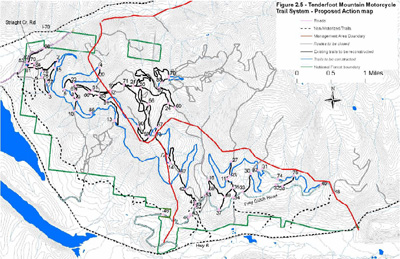 7
7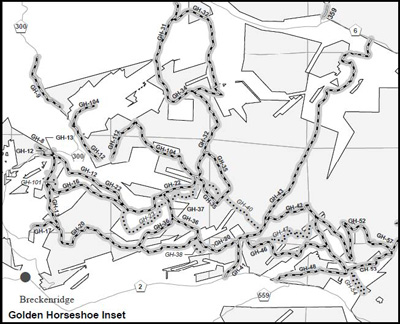
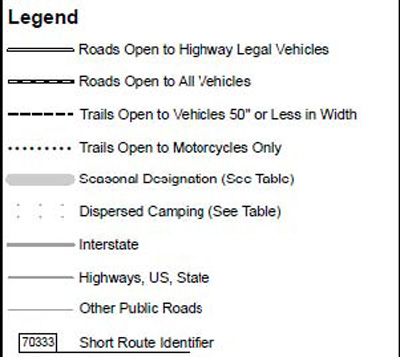 8
8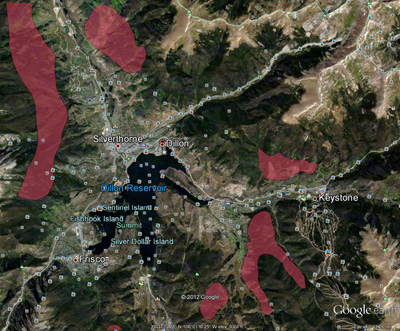 9
9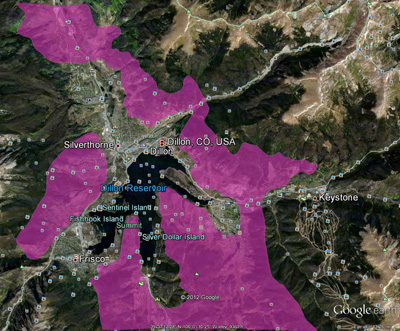 10
10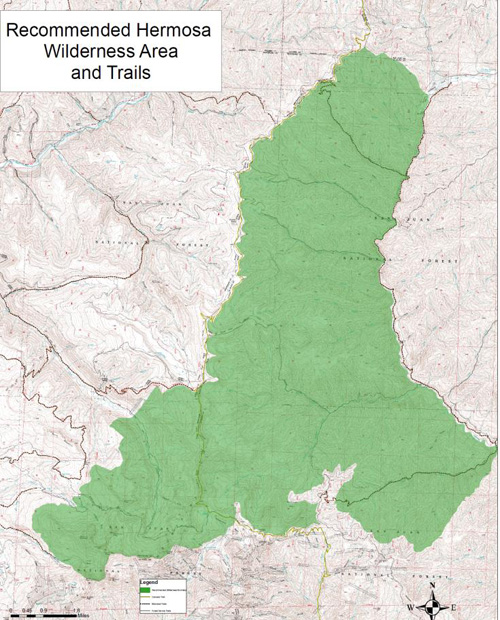 2
2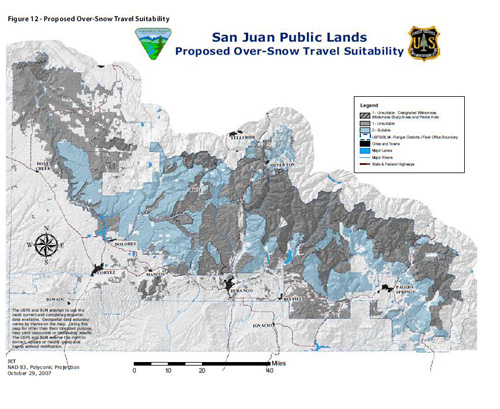 3
3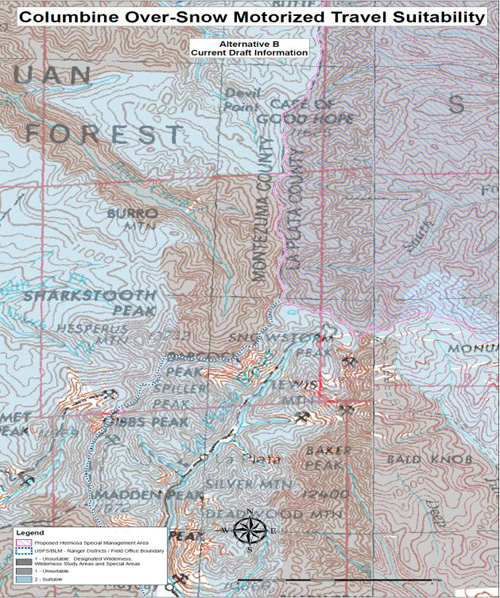 4
4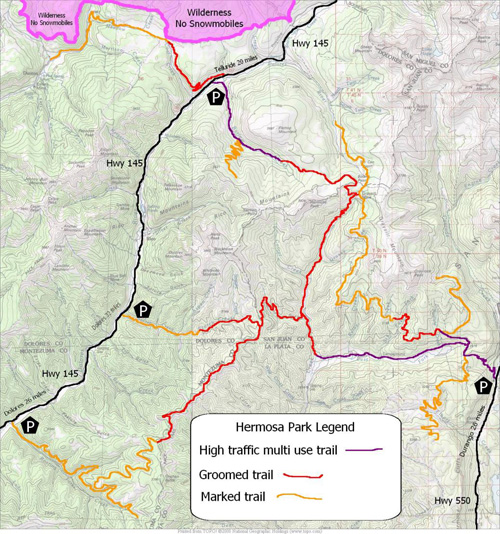 5
5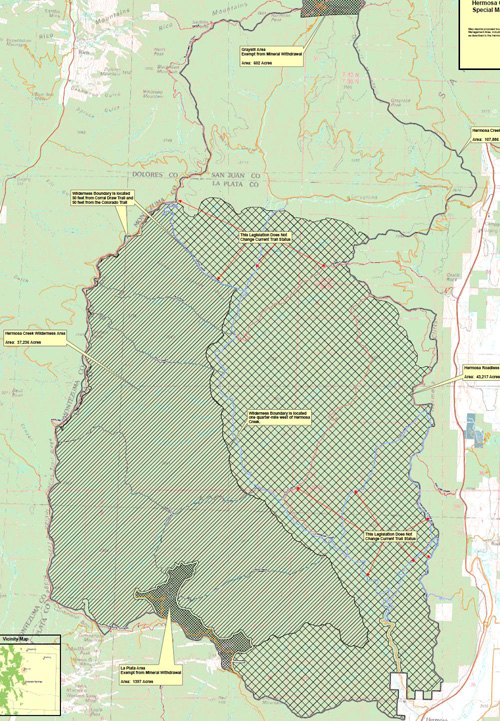 6
6